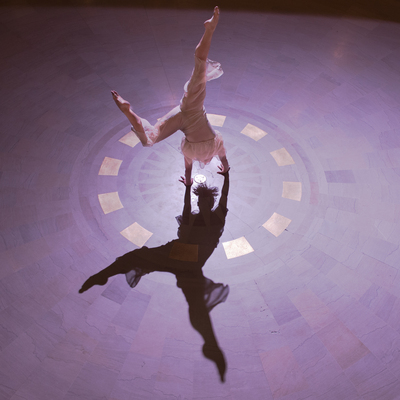Thursday night (September 12) at the Ruthven Natural History Museum, Ann Arbor Danceworks put on an encore performance of Within/Beyond. The show was comprised of modern choreography inspired by scientific research at the University of Michigan and intriguing stories across the disciplines (including my personal favorite, a solo that told the harrowing tale of Henrietta Lacks).
Though I was not moved by a piece where dancers wore pink and orange colored outfits and tossed bouncy balls around (to illustrate the cellular process of autophagy) I was moved by everything else.
My favorite pieces were ‘HeLa’ and ‘From Afar: The Loneliest Star’.
‘HeLa’ was a solo performance that felt more like interpretive dance or spoken word performance. It was essentially the dancer (the beautiful and talented Robin Wilson) boldly telling the world the story of Henrietta Lacks. Â Lacks was a cervical cancer patient in the 1950s whose cells and cancer tissue was taken and used without her permission. Â “I’m not talking about an arm,” Wilson said, holding up her arm, “Or a leg” she said, bringing her pointed foot up in the air with great precision. Â “I am talking about tissue” she said, running her hands down the front of her body. Â As Wilson spoke, gesticulated, and brilliantly articulated the injustice of Lacks’s unknown cell donation, I was transfixed in my seat. Â Feeling the insides of my body as I breathed and Wilson drew cuts of breath as she flung her hands out, grasping one wrist with the other to physically embody the imprisonment of Lacks’s DNA in the hands of scientists.
‘The Loneliest Star’ was one of three pieces in the ‘From Afar’ suite, all of which centered around the cosmos. Â These pieces were by far the most aesthetically pleasing as the dancers moved in unison, creating swirling circles with their light, cream-colored costumes and curved arms.

On the whole, it was an eye-opening experience that demonstrated the human-side of science. Â Even science that is very vast or very small can be brought to life when enough raw emotion is fostered into dance.


Leave a Reply
Be the First to Comment!